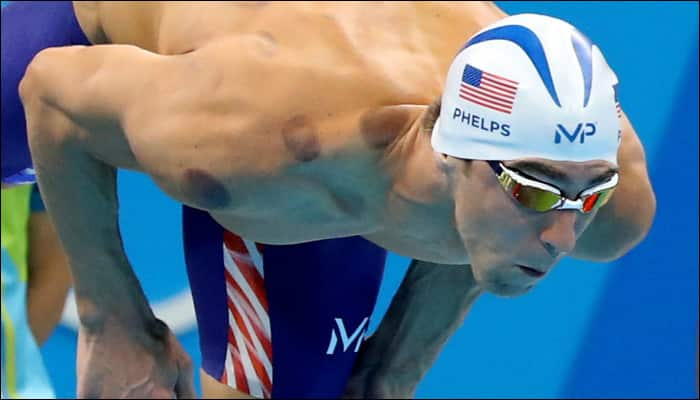Zee Media Bureau/Udita Madan
New Delhi: Numerous photographs of many Olympic athletes sporting red blotches on their body have been doing the rounds of social media.
The angry and painful-looking red spots first caught people's eyes when American swimmer and 21-time Olympic medalist Michael Phelps was spotted with them on his body.
Of course, cyberspace went crazy imagining all sorts of things, but as it turns out, they were just the result of 'Cupping' – an ancient Chinese therapy that goes back more than 2000 years.
The process is believed to relieve sore muscles and mobilize blood flow to the skin, which creates “a mild immune response,” by using cups that provide a sort of suction by way of flame or a suction valve, wherein the air inside the cups are burned off by using flame.
Cups used in cupping were historically made of bamboo or clay. Nowadays, plastic and glass are often used.
There are two types of cupping – Dry cupping and wet cupping.
While dry cupping is completely noninvasive and uses suction to professedly increase blood circulation, loosen tissue, and relax the nervous system (which is why cupping is used to treat hypertension), wet cupping is similar to dry cupping but takes the whole process a step further: Small incisions are made to the cupped area in order to bleed it.
Wet cupping should be performed in a sterile environment with sterile instruments.

How cupping works:
Medical professionals and scientists have given explanations on the working of cupping therapy basing them on four theories.
The first one explains that blood circulation is increased due to the negative pressure created by the suction cups, which stretches the muscles and nerve fibers. However, this explanation doesn't cover why cupping is perceived useful in treating cellulitis and migraines.
The second theory says that injury caused by cupping trips pain inhibitors in dorsal horn cells at the level of the spinal cord. Once again, however, this explanation fails to demonstrate why cupping is useful in conditions that are usually painless like hypertension.
The third theory binds the therapeutic effect of cupping with acupoints or acupuncture points. (Cupping can be applied either to acupuncture points or localized areas of injury.)
Finally, some theorize that wet cupping works by facilitating excretion of tainted blood and tissue fluids.
However, as per Science Alert, a 2012 study published in PLOS ONE journal, which reviewed 135 trials of cupping therapy from 1992 to 2010, found that "cupping has potential effect in the treatment of herpes zoster and other specific conditions" but "further rigorously designed trials on its use for other conditions are warranted".
















